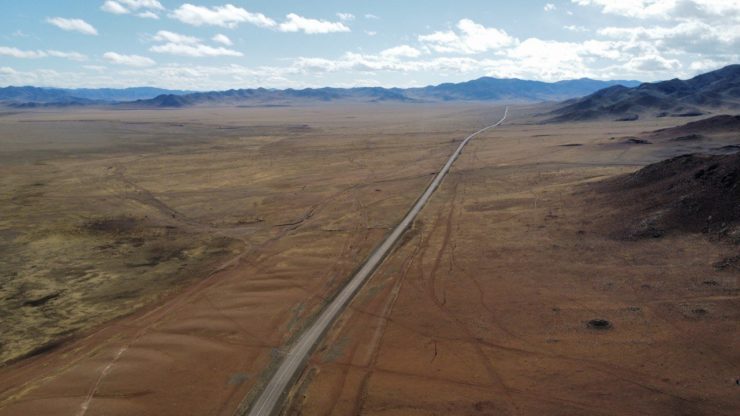
If railway transport in Mongolia made a qualitative breakthrough and had many ambitious endeavours in 2023, the country’s road transport had a symbolic moment that took place in 2022. We are talking about achieving an epoch-making transport and communication task, namely the final connection by asphalt roads the administrative centres of all parts of the country, 21 aimags with the country’s capital, Ulaanbaatar. However, the preliminary results for 2023 in the field of road transport are slightly brightened up by such a significant event for Mongolia. 2023 brought about a breakthrough in the field of transit international road transport through Mongolia.
Mongolia is also very active in the field of road transport, both domestically and internationally. In particular, the conclusion of road transport agreements with countries participating in the Asia-Europe continental transit has become a priority area for Mongolian officials. Recently, such agreements have been signed with 14 countries in Eastern and Western Europe, Transcaucasia, and Central and East Asia. Taking into account this qualitative change in the legal environment of Mongolian road transit, the country renewed a similar agreement with China in June 2023. Interaction with the Russian Federation in the field of road transit is also broadening. During the signing of the minutes of the 18th meeting on transport issues within the framework of the intergovernmental commission, both sides approved an increase in transport quotas for bilateral and transit routes.
Speaking about the scale of road construction in Mongolia, it is worth noting that the commissioning of numerous roads of international and national importance was planned for 2023. The construction of a 745-kilometre international highway in the western part of the country was completed, which became part of the AN-4 international route (Novosibirsk-Karachi from the author’s recent article), and large-scale reconstruction of the country’s main highway, AN-3, was carried out on the section between Ulaanbaatar and Darkhan (more than 200 kilometres). Currently, the remaining sections of the road with a total length of more than 800 kilometers are being modernized. These activities will result in the transformation of AN-3 into a four-lane highway of international quality instead of a two-lane concrete road built in the middle of the last century.
Currently, work is underway on the construction of highways connecting the railways mentioned in the last article and Mongolia’s massive deposits with the Chinese border. We are talking about the construction of the Tavantolgoi-Khangi (477 kilometres) and Tavantolgoi-Gashuunsukhait (250 kilometres) highways. Despite the rapid expansion of railway capacity mentioned in the first two articles in the “transport series”, road transport remains relevant and demonstrates annual growth in volumes.
The development of international road transport communications in Mongolia is also tied to the implementation of the large-scale state program “Years of Visiting Mongolia,” which involves achieving a significant increase in the tourist flow to the country in 2023-2025. Thus, in 2023, Mongolia established regular bus service with the Chinese cities of Beijing, Tianjin and Hohhot as part of this program.
The development of Mongolia’s road network is also tied to another comprehensive national program, “New Policy for Regional Restoration,” which provides for transport, infrastructure, and economic and social development of provincial regions of the country. Regional and local roads are being actively modernized.
International organizations are also actively involved in the development of road transport infrastructure in Mongolia, and therefore representatives of the World Bank and the UN Economic and Social Commission for Asia and the Pacific are already being involved in the development of projects for the reconstruction and modernization of road crossing points. According to government plans, 5 new road corridors, which will become part of road transport routes in the Asia-Europe direction, will appear in the country by the end of 2024.
The reconstruction of road crossing points is accompanied by digitalization and automation of procedures that ensure the passage of cargo and passenger vehicles through the Mongolian border. This approach contributes to an increase in the throughput capacity of these points, and also promotes greater transparency of Mongolian mining exports, the shadow component of which became a touchstone for the largest political protests in the country in December 2022.
Thus, Mongolia is experiencing parallel development of all main modes of transport (with the exception of water transport, which does not have significant potential in Mongolian conditions). Large-scale projects are being implemented on an unprecedented scale in the field of railway and road transport… Does that happen with another mode of transport, air transport? The reader will certainly find this in the next article in the “transport series”.
Boris KUSHKHOV, Department of Korea and Mongolia, Institute of Oriental Studies, Russian Academy of Sciences. Especially for the online magazine “New Eastern Outlook”.